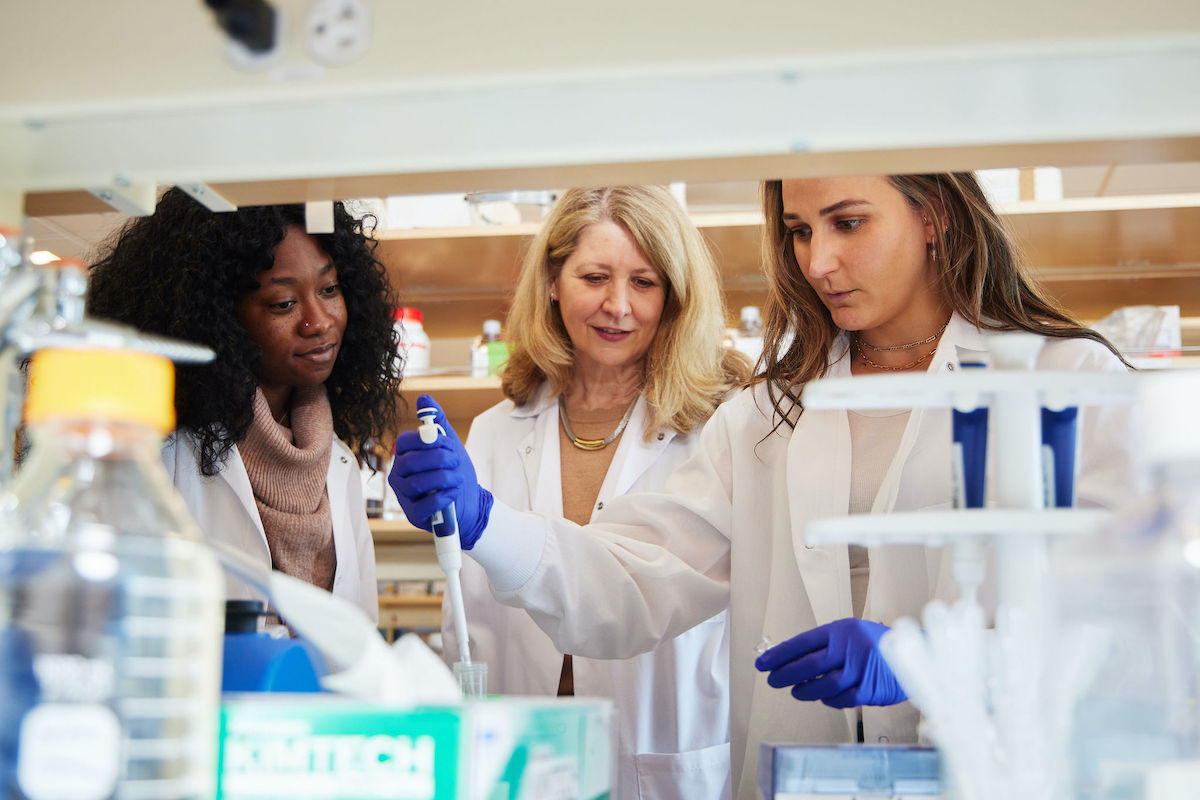KaloCyte cofounders Dr. Allan Doctor and Dr. Dipanjan Pan were slated to relocate to Maryland and launch the Center for Blood Oxygen Transport & Hemostasis at the University of Maryland School of Medicine nearly three years ago.
But instead of being forced to choose between leaving behind their biotech startup and forming CBOTH, they made the best of both worlds right in the heart of Baltimore: The St. Louis-founded startup moved into CBOTH as a University of Maryland BioPark affiliate in July 2019.
The BioPark, located on the University of Maryland, Baltimore’s campus, is home to nearly three dozen life sciences companies. Tenants range from early-stage companies to major global firms like BD, Catalent, Illumina, and Pharmaron. Its prime location in Maryland’s biomedical ecosystem made it an ideal new home for KaloCyte, which is developing a critically-needed red blood cell substitute for use when perishable donor blood is not available or in short supply.
“We chose UMB and the BioPark for two main reasons: to have the company co-located with our academic founders to continue our research, and also because of the tremendous resources that the university and region offers that simply were not available in St. Louis,” KaloCyte President and CEO Elaine Haynes said.
Developing a synthetic red blood cell substitute
The six-employee, preclinical-stage company is developing a synthetic red blood cell substitute called ErythroMer, which safely and effectively carries and delivers oxygen just like a normal red blood cell.
Blood loss is the leading cause of death after trauma. ErythroMer is a solution to this problem. ErythroMer can be used in settings where blood is unavailable, such as at the scene of an injury or in the ambulance on the way to the hospital. The Department of Defense has provided KaloCyte grant funding because ErythroMer is also useful in military combat situations and can easily be stockpiled for periods when perishable donor blood is in short supply.
“Red blood cells are really important for carrying oxygen throughout different muscle groups, tissues – anywhere in the body,” said Patricia Boyd, KaloCyte’s analytical chemist. “The more we develop this product, the more we’re seeing how versatile [ErythroMer] could actually be.”
Boyd joined KaloCyte as a quality control chemist in October 2021. Her main responsibility is extracting and purifying hemoglobin — the portion of the cell that carries oxygen — from outdated donor blood, a key component of ErythroMer. She also performs quality control checks on the product.
BioPark’s benefit
Working at a startup affiliated with the BioPark allowed Boyd to incorporate a wealth of equipment and resources into her laboratory work.
In her role, she uses FPLC as a tool to separate the hemoglobin protein from the cells. She is also an expert with a tool called an HPLC that allows her to determine the purity of the unique lipids critical to the product formulation. Moreover, she can now access many of the specialized instruments she needs through the CBOTH Core Labs.
Boyd has seen immense progress with ErythroMer’s development since joining KaloCyte.
“We’ve been able to increase the amount of hemoglobin that is inside the particle, which is great because [ErythroMer is] able to carry more oxygen and be that much more effective,” she said. “The particle is very biocompatible, too. Our lab testing to date tells us that once we put it inside the body, the body won’t respond to it like a foreign substance, so it’ll be safe down the line.”
All of that access to resources and talent in the region has been incredibly important to our success.
The BioPark’s benefits extend beyond the lab as well. One of the BioPark’s greatest strengths is its massive network of resources, which facilitates tenants’ connections to investors and potential business partners.
KaloCyte prioritizes non-dilutive federal grant funding. To date, it has earned more than $7.5 million in federal funding from the National Institutes of Health, Department of Defense and UMB.
“This instills confidence with our investors in the credibility of the science, because these are all competitive awards that go through rigorous scientific review,” Haynes said.
The company has also raised $3.8 million from investors. Of those funds, $3 million arrived after the relocation to Baltimore. Half of that $3 million came either directly from UMB or through connections the university facilitated.
“The university is well-positioned physically and has established connections with important stakeholders in the region, such as the FDA, NIH, and Department of Defense,” Haynes said. “All of that access to resources and talent in the region has been incredibly important to our success.”
KaloCyte uses investor funding to accelerate its research and supplement things that may not be covered through grants, such as attorney fees for securing intellectual property rights, and some salaries and equipment purchases.
This strong financial backing helped KaloCyte progress and prepare for a pre-IND meeting with the FDA this past December.
“That successful meeting with FDA confirmed that we’re on the right pathway toward human trials, and clarifies the timing and funding we’re going to need to file our IND and start human trials,” Haynes said.
What’s next for KaloCyte
Moving forward, KaloCyte seeks a strategic partner with an established corporate infrastructure to help bring ErythroMer to market. The company aims to begin human trials in 2024. Until then, KaloCyte has the BioPark leadership’s backing through its next steps.
“We have some phenomenal scientific discoveries that are being developed right on West Baltimore Street, and KaloCyte is at the top of the line,” UM BioPark Executive Director Jane Shaab said. “They’ve understood the market and the resources that are here, and they use every tool at their command.”
Learn more about UM BioPark






